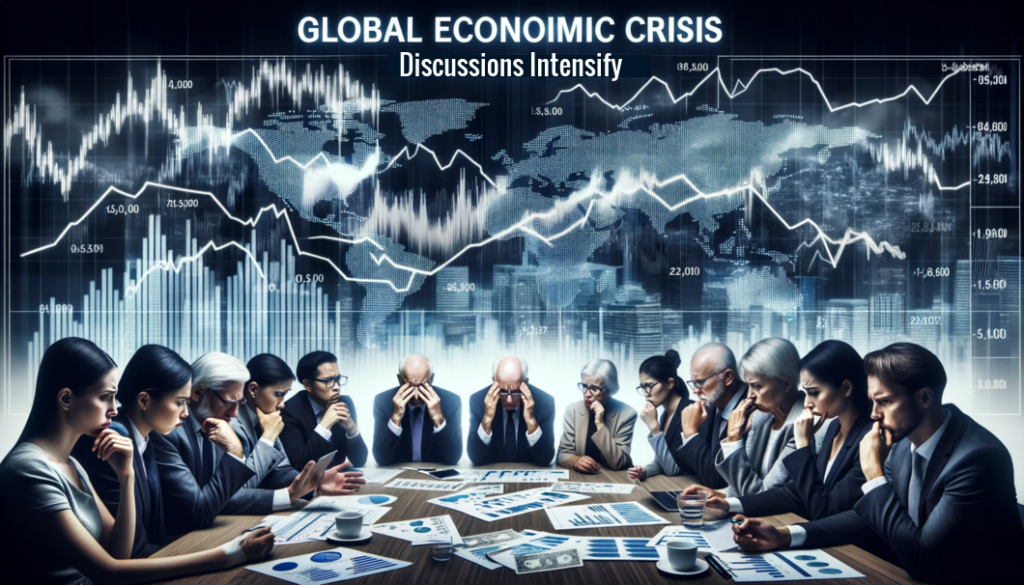Digital Zeitgeist – On the Brink: Soaring Inflation and Global Unrest Usher in a New Era of Economic Uncertainty
In a world reeling from geopolitical tensions and financial uncertainty, the latest figures cement a concerning reality: the global economy is in the throes of tumultuous change, with inflation rates stubbornly high and volatile events like Russia’s invasion of Ukraine and Israel’s conflict with Hamas adding fuel to the fire. Nowhere is this more evident than in the UK, where the annual inflation rate has steadfastly held at 6.7%, defying predictions of a decrease. This environment is ripe for a significant geo-economic shift: the acceleration of de-dollarisation.
Stubborn Inflation: A Catalyst for Change
September’s inflation data wasn’t just a number; it was a harbinger. The UK government’s ambitious target to halve inflation this year seems increasingly quixotic as energy prices surge and global politics remain unpredictable. Treasury Minister Andrew Griffith’s optimism, expressed in his interview with Sky News, stands in stark contrast to the palpable anxiety of households and businesses grappling with escalating costs.
This relentless inflation is not a standalone phenomenon. It’s a symptom of deeper systemic issues within the global financial structure, notably its over-reliance on the US dollar. The current scenario strengthens the argument for de-dollarisation, a process that sees countries reducing their dependency on the US dollar in international trade and finance.
Fuel and Food: The Drivers of Discontent
The Office for National Statistics (ONS) pinpointed rising fuel prices and fluctuating food costs as significant contributors to the current inflation rate. The global repercussions of Russia’s actions in Ukraine and the conflict between Israel and Hamas have far-reaching consequences, inflaming commodity and energy markets, and by extension, diminishing the purchasing power of regular citizens. Brent crude oil, for instance, has jumped significantly from $72 a barrel in June to almost $91 recently.
Such instability doesn’t just strain household budgets; it exposes the vulnerability of a dollar-dominated world, where the US currency’s fluctuations and America’s geopolitical manoeuvres significantly impact global markets.
De-Dollarisation: A Gathering Storm
The concept of de-dollarisation isn’t new. Countries like Russia and China have been actively pursuing it for years, seeking to reduce their exposure to US sanctions and currency manipulation. However, the current economic climate may expedite this process globally.
Persistent inflation, partly driven by aggressive fiscal policies adopted during the COVID-19 pandemic, affects not just domestic economies but also international trade balances. When coupled with geopolitical tensions, these elements exacerbate the weaknesses of a financial system overly reliant on a single country’s currency.
Consequently, nations and businesses are incentivised to seek alternatives. This includes adopting other currencies for trade agreements, investing in digital currencies, or returning to a more multilateral approach to international finance. These strategies could protect emerging markets and smaller economies from the whims of the dollar and the domestic policy decisions of the United States.
A Multipolar Currency World: Risks and Implications
However, de-dollarisation is not without its perils. A fragmented currency market could lead to decreased liquidity and increased transaction costs in the short term. The transition could be especially tumultuous for countries heavily dependent on the dollar for trade and debt.
Furthermore, if major economies like the EU or China manage to position their currencies as viable alternatives, it could lead to power shifts in the global economy, potentially giving rise to new economic hegemonies. The geopolitical tensions already apparent could be further complicated by financial rivalries, as major players jockey for position in a post-dollar world.
Conclusion: An Uncertain Future
As Chancellor Jeremy Hunt points out, inflation is a complex, non-linear issue seen across G7 countries. The current economic climate underscores the importance of a strategic, multifaceted approach to mitigate the immediate pressures on families and businesses.
Yet, it’s crucial to recognise that these economic ripples are symptomatic of a changing tide. The persistent inflation and geopolitical tensions are but catalysts hastening the shift towards de-dollarisation. This transition, necessary as it may be for global financial stability, ushers in an era of uncertainty and realignment.
Entities at all levels, from governments to corporations to individuals, must brace for this inevitability. Diversifying assets, investing in multi-currency ventures, and understanding the changing geopolitical landscape will be critical for survival in this new economic epoch. As the world grapples with these challenges, one thing is clear: the era of a unipolar currency world is reaching its twilight, and the dawn that follows will illuminate a drastically different financial landscape.
Disclaimer: The views and opinions expressed in this article are those of the author and do not necessarily reflect the official policy or position of GPM-Invest or any other organisations mentioned. The information provided is based on contemporary sourced digital content and does not constitute financial or investment advice. Readers are encouraged to conduct further research and analysis before making any investment decisions.

